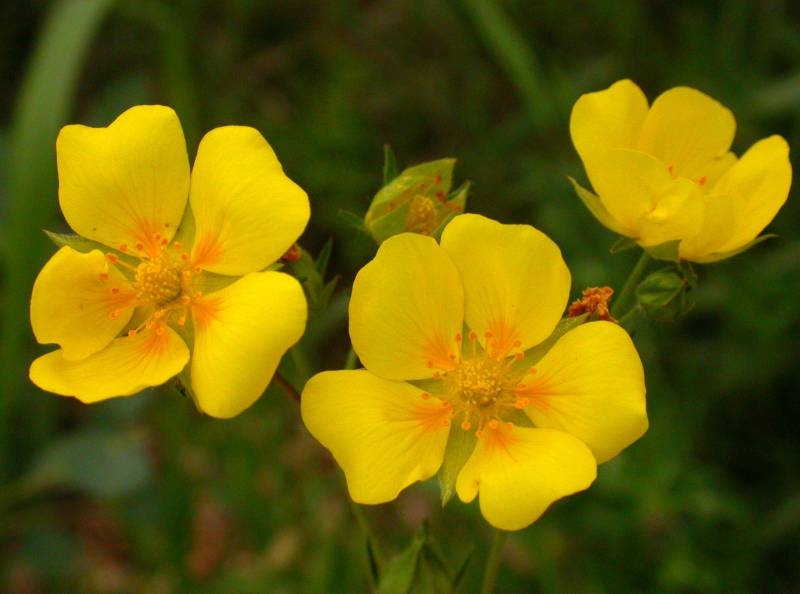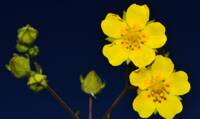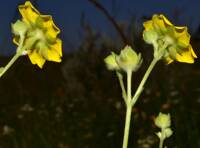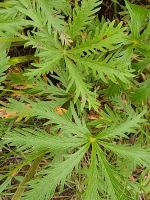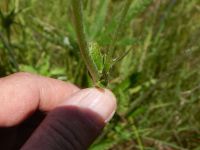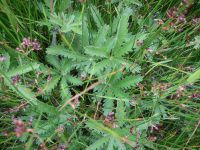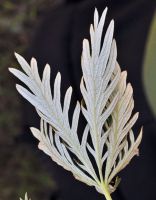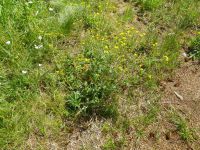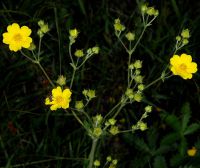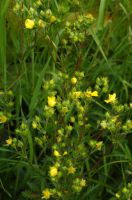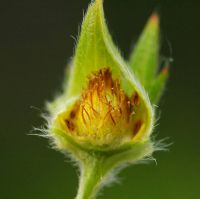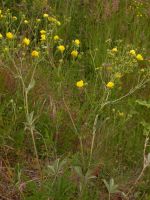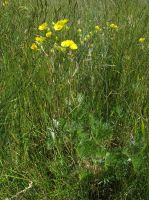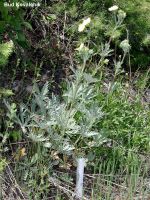Distribution: Widely distributed on both sides of the Cascades crest in Washington; Alaska to California, east to the Rocky Mountains, northern Great Plains, Great Lakes region, and eastern Canada.
Habitat: Varied habitats; moderately saline soil, grasslands, moist areas in shrub-steppe, forested mountains and subalpine meadows.
Flowers: June-August
Origin: Native
Growth Duration: Perennial
Conservation Status: Not of concern
Pollination: Bumblebees, bees, flies, butterflies, beetles, moths, wasps
Highly variable perennial from a branched crown, the several ascending or erect stems 4-8 dm. tall.
Basal leaves numerous, with petioles to 3 dm. long, palmately divided; the leaflets 7-9, broadly oblanceolate to oblong-elliptic, varying from glabrous and green on both surfaces to hairy above and white-woolly below, toothed to deeply dissected; cauline leaves 1-2, reduced; stipules up to 2.5 cm. long, entire to lacerate.
Inflorescence large, many-flowered, open, somewhat flat-topped; calyx 6-10 mm. broad, the 5 lobes 4-10 mm. long, ovate-lanceolate, the alternating bracteoles narrowly lanceolate, nearly as long; petals 5, yellow, obcordate, longer than the sepals; stamens 20; pistils numerous, the style slender, sub-terminal on the achene and the same length.
Achene 1.5-2 mm. long, smooth, greenish.
Publication: Bot. Mag. 57: t. 2984. 1830.
- var. brunnescens – glandular cinquefoil Occurring east of the Cascades crest in southeastern Washington; southeastern Washington to northeastern Oregon, east to Montana and Colorado, possibly introduced in Alaska.
-
var. flabelliformis – comb-leaf cinquefoil, Elmer's cinquefoil, Idaho cinquefoil
 Occurring east of the Cascades crest in Washington;
Occurring east of the Cascades crest in Washington; -
var. gracilis – Hall's cinquefoil, slender cinquefoil, wooly cinquefoil
 Occurring east of the Cascades crest in Washington; Alaska to Califronia, east to the Rocky Mountains and Great Lakes region.
Occurring east of the Cascades crest in Washington; Alaska to Califronia, east to the Rocky Mountains and Great Lakes region. - var. pulcherrima – beautiful cinquefoil Occurring on both sides of the Cascades crest in Washington; Alaska to California, east to the Rocky Mountains and Great Lakes region.
PNW Herbaria: Specimen records of Potentilla gracilis in the Consortium of Pacific Northwest Herbaria database
WA Flora Checklist: Potentilla gracilis checklist entry
OregonFlora: Potentilla gracilis information
E-Flora BC: Potentilla gracilis atlas page
CalPhotos: Potentilla gracilis photos

